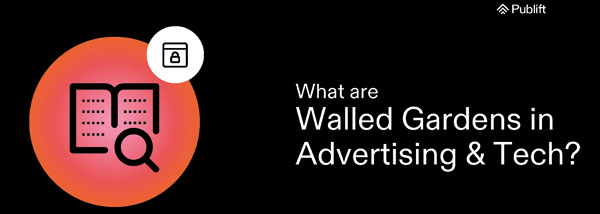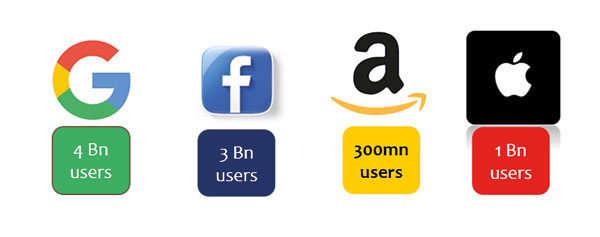View(s):
Perhaps you might wonder how these three platforms are able to capture nearly two-thirds of the market in such a competitive industry. The explanation largely boils down to user data and the way these platforms structure their marketing services, and much of that is due to the “walled garden” approach.

A walled garden is a closed platform or ecosystem in which the platform provider controls all of the media, applications, and/or content and limits access as it sees fit, ultimately aiming to establish a monopoly.
Let’s examine the specific features of walled gardens in tech and advertising, their relevance to publishers, and some of their main benefits and drawbacks.
Defining Walled Gardens
Originally coined by John Malone, the founder of Telecommunications Inc. (later acquired by AT&T), the word “walled garden” had a slightly different meaning, but it is currently gaining a little more attention as the conversion around ad tech expands.
In the 1970s, telecom providers like Bell System were the best illustration of a walled garden before a large tech corporation like Google, Facebook, or Amazon was established. These businesses controlled some of the data that travelled over their phone lines and owned all of the hardware.

Even while the telecom sector has lost some of its power as a result of a few historic court cases, digital behemoths like Apple continue to maintain complete control over their own iOS environment, just like the Bell system did. This control extends to the apps on their marketplace as well as mobile devices.
The concept of walled gardens has a somewhat different connotation on the internet and, more precisely, in the advertising industry, but it basically refers to the fact that advertisers are compelled to employ a closed ecosystem in order to conduct their campaigns.
Way forward
Advertisers are forced to either a) use the company’s data management platform (DMP) to target users based on their data, b) purchase ads using the demand-side platform (DSP), or c) utilise dynamic creative optimisation (DCO) to customise and manage the ad’s transmission.
The control of the campaign data is the cherry on top that truly turns a walled garden into a walled jail. The majority of the data is kept in-house and data leakage is prevented when a platform restricts data exporting and provides aggregated metrics for measurement.
Although creating a walled garden is difficult, as we’ll see in a moment, it can be one of the best ad tech methods.
HitAd.lk is the best and biggest mobile phone market in Sri Lanka, and we guarantee you will find what you need here from our extensive listing of mobile phones for sale in Sri Lanka. Whether it’s a budget-priced smartphone for communication, or higher end features with advanced connectivity, there are many different options from which to choose from on our site!


